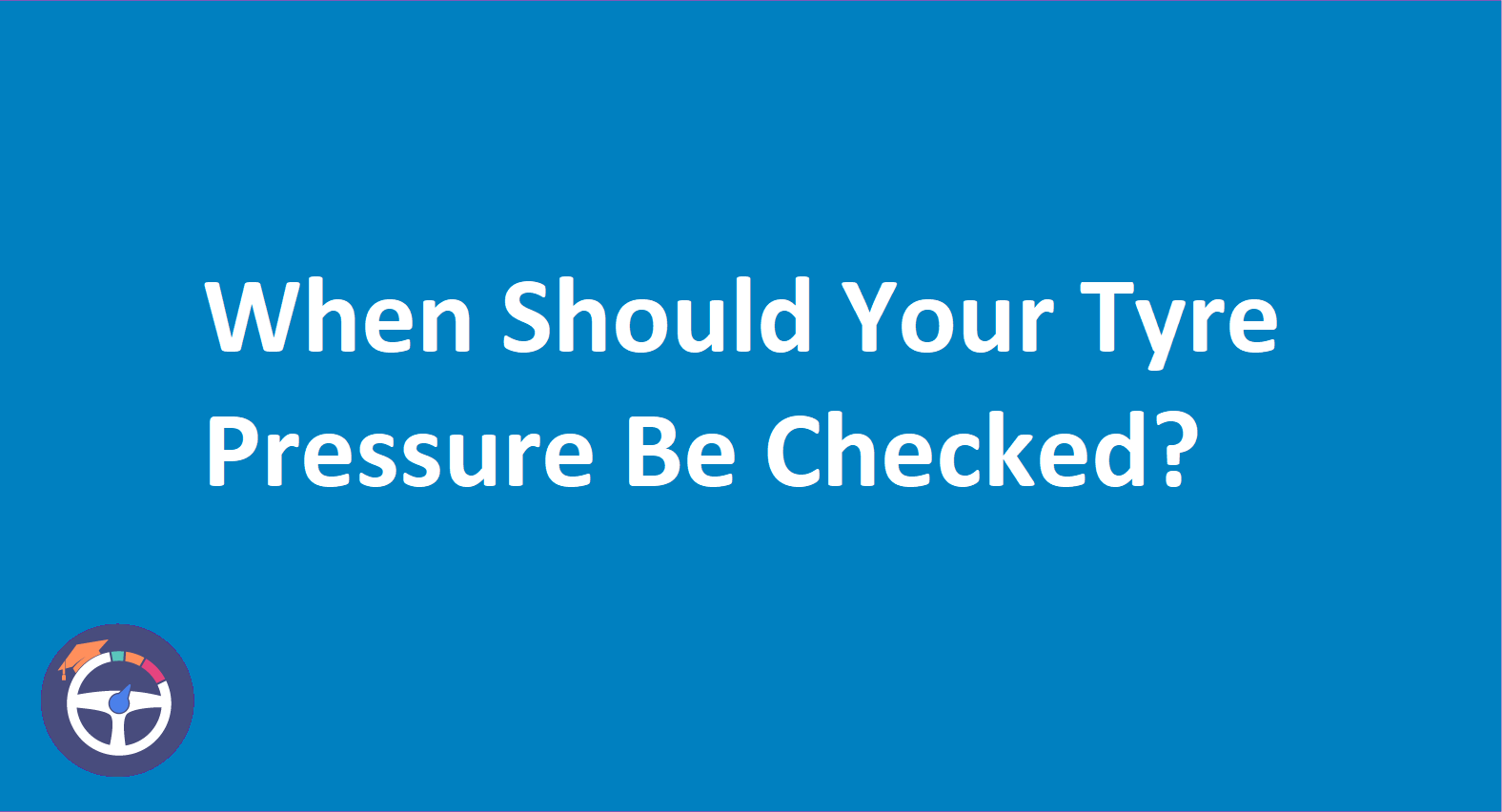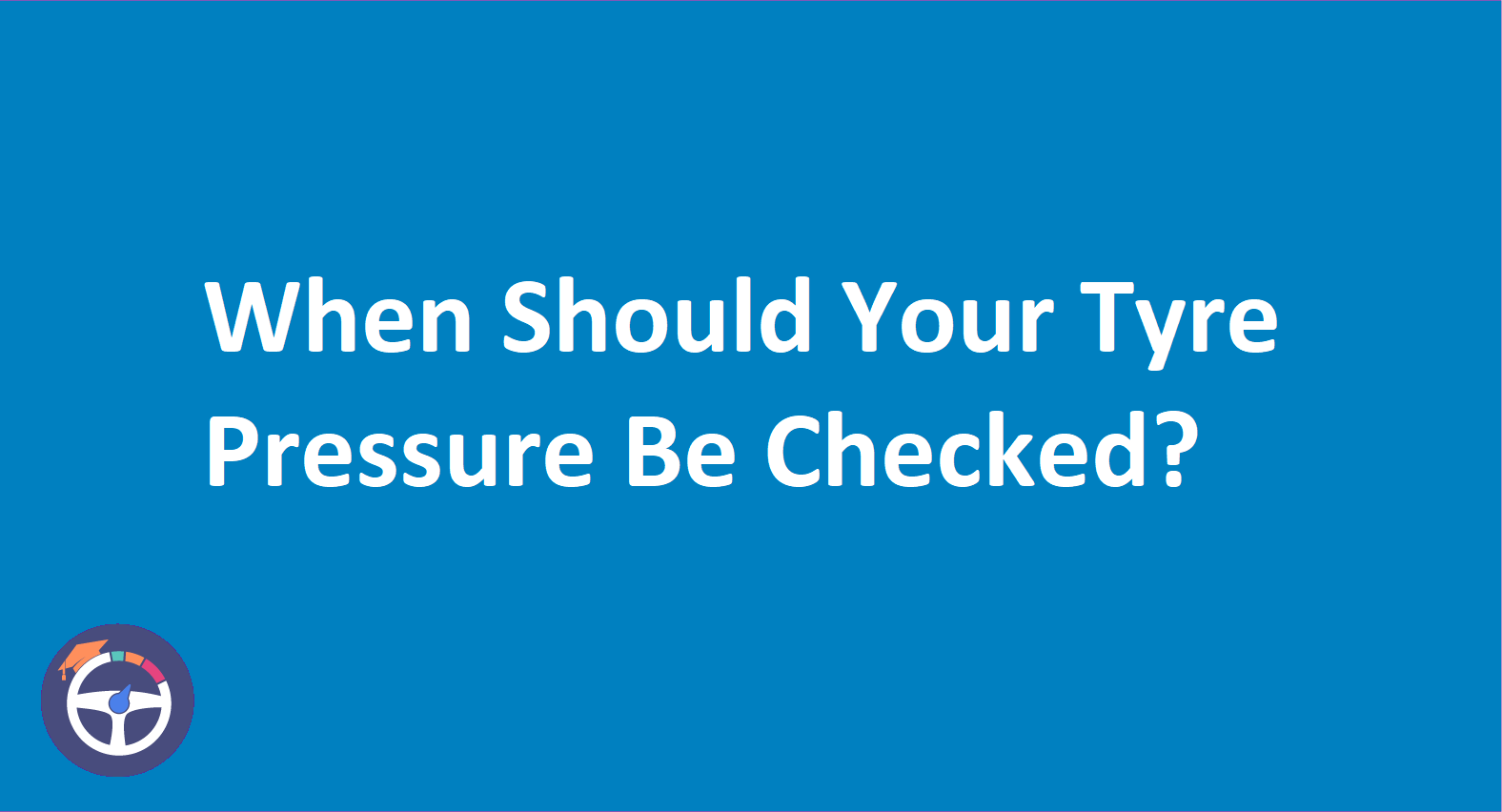When Should Your Tyre Pressure Be Checked?
Check the tyre pressures when the tyres are cold for a more accurate reading. Heat from a long journey can increase the pressure inside the tyre.

Contents
- When Should Your Tyre Pressure Be Checked? A Theory Test Guide
- Why Is Tyre Temperature Important?
- When Are Tires Tagged as Cold?
- When Should Tyre Pressures Be Checked?
- What Happens if My Tires Are Underinflated?
- How Do My Overinflated Tires Affect Me?
- How Can I Find The Recommended Tire Pressure For My Car?
- What Equipment Is Needed to Check Tire Pressure?
- Car Tyre Pressure Checking Instructions:
- Maintaining Proper Tire Pressure: A Long-Term Benefit
Many parts are necessary for our cars to run safely and effectively. Tires, those important rubber circles that keep us attached to the road are essential. But maintaining tires properly entails more than just looking at their tread depth. It is equally crucial to maintain the proper air pressure in your tires for performance safety and even fuel efficiency.
Tire temperature is a crucial factor that surpasses all others. In addition to addressing all of your pressing concerns, this blog explores the topic of tire pressure and emphasizes the value of checking it when your tires are cold.
Why Is Tyre Temperature Important?
When it gets hot air expands. This fundamental idea also holds true for the tires on your car. The tires heat up while you drive due to friction between them and the road. The air pressure inside the tire also rises as a result of this temperature rise. The catch is that you will get a reading higher than the actual recommended pressure for your car if you check your tire pressure after a long drive. This elevated interpretation may be deceptive.
Why? Because the tire's internal air pressure will drop as it cools. Therefore when the tires cool down to normal temperature you may find that you underinflated your tires if you inflated them based on a hot reading.
When Are Tires Tagged as Cold?
In this sense cold means that the tires haven’t been driven on in a while. Before you leave for the day you should ideally check the pressure in your tires first thing in the morning. Aim to wait for the tires to cool down completely for at least three hours even if you've already driven a short distance.
When Should Tyre Pressures Be Checked?
This is the suggested timetable for tire pressure checks:
1. Once a month: Maintaining the correct tire pressure should start with this routine.
2. Prior to lengthy drives: In your car adding excess weight can change the pressure in your tires. In order to guarantee maximum performance and safety checks before taking a road trip.
3. As the seasons change: Tire pressure may slightly fluctuate due to temperature changes. Maintaining appropriate inflation can be aided by seasonal checks.
TIP: Don’t forget to check the pressure in your spare tire as well! It's often overlooked but it’s just as crucial in an emergency.
What Happens if My Tires Are Underinflated?
Underinflated tires present a number of dangers.
1. Decreased fuel efficiency: In order to overcome the increased rolling resistance caused by underinflated tires your engine must work harder which reduces fuel efficiency.
2. Premature tire wear: Underinflation frequently results in uneven tire wear. The weight is borne primarily by the underinflated sections which accelerates tread wear and may cause tire damage.
3. Less handling: Optimal grip and handling are guaranteed by proper tire pressure. The handling performance of your car may be affected by underinflated tires particularly when making fast turns or emergency maneuvers.
4. Enhanced risk of blowouts: Tires that are significantly underinflated are more likely to experience blowouts which can be hazardous and result in accidents.
How Do My Overinflated Tires Affect Me?
Although concerns about underinflation are more prevalent, overinflation can also have unfavorable effects:
1. Less comfortable ride: Stiff tires from overinflation produce a rougher ride and more road noise.
2. Decreased traction: On damp or slick surfaces in particular the larger contact area with the road may result in decreased traction.
3. Tread wear in the center: Tires with excessive inflation have a tendency to lose tread material more quickly in the center which reduces tire life.
How Can I Find The Recommended Tire Pressure For My Car?
It is not a random number that is the recommended tire pressure for your particular car model. The manufacturer carefully considers both safety and best performance when making this decision. Here are a few sources to find this information:
1. Owner’s Manual: The bible of your vehicle. The recommended tire pressure for both cold and hot inflation (though checking when cold is preferred) will be clearly stated in the owner’s manual.
2. Tire Placard: Check the glove compartment or driver’s door jamb for a sticker. The recommended tire pressure for the model of your car will be shown on this placard.
3. Tire Sidewall: The maximum inflation pressure for that particular tire will also be indicated on the sidewall of your tire. It’s important to remember that this is the highest pressure the tire can handle and not always the pressure that your car should be running.
What Equipment Is Needed to Check Tire Pressure?
The air car tyre pressure in your tires can only be determined with a trustworthy tire pressure gauge. Auto parts stores, gas stations, and internet retailers, all stock these gauges. Tyre pressure gauges come in two primary varieties.
1. Dial gauge: A pressure gauge with a needle that shows the pressure is featured in this traditional gauge. They are reasonably priced and simple to use.
2. Digital Gauge: These gauges provide a digital reading of the pressure and frequently come equipped with an easy-to-adjust pressure bleed button.
Car Tyre Pressure Checking Instructions:
1. Put your car in a level parking spot. This guarantees that each tire's pressure reading is accurate.
2. While the engine is off, apply the parking brake.
3. Identify each tire's valve stem. The small rubber protrusion with a cap is what it is.
4. Remove the stem cap of the valve.
5. Onto the valve stem securely fasten the tire pressure gauge. As air fills the gauge you should hear a hissing sound.
6. Take note of the gauge pressure reading. Check your owner’s manual or tire placard for your car's recommended pressure and compare it to that.
7. For every tire including the spare follow steps 4-6.
8. Use an air compressor or an air pump at a gas station to inflate the tire if the pressure is low. To prevent overinflation add air in small bursts and check the pressure often.
9. Retighten the valve stem cap firmly after the required pressure has been achieved.
Safety Advice: Never put your car’s tires higher than what is advised.
Maintaining Proper Tire Pressure: A Long-Term Benefit
One easy but important part of car maintenance is making sure your tires are properly inflated. It ensures optimal car performance increases fuel efficiency prolongs tire life and increases your safety on the road. You may guarantee that your tires remain happy and healthy, saving you money and keeping you safe on every trip by adding frequent tire pressure checks into your routine and heeding the advice given above.
Please feel free to leave a comment below if you have any questions about tire pressure or auto maintenance. We will be pleased to assist you!


